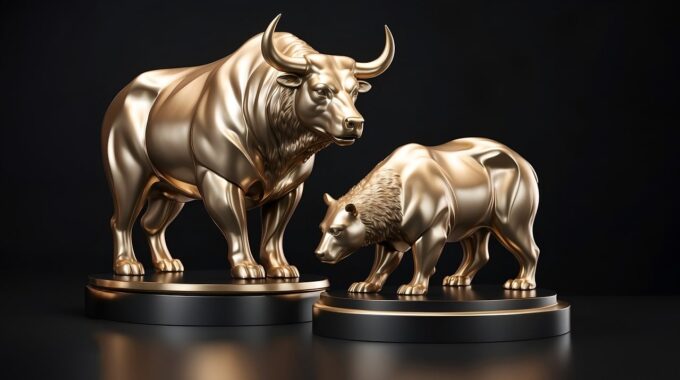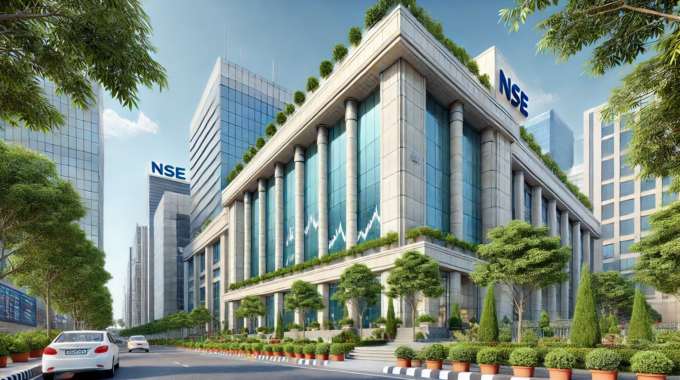The National Stock Exchange (NSE) of India The National Stock Exchange of India (NSE) serves…

Are you interested to know about London Stock Exchange?
What is London Stock Exchange (LSE)?
The London Stock Exchange (LSE) is a prominent financial marketplace situated in London, England. As of July 2024, the aggregate market value of all companies listed on the LSE reached $3.42 trillion. The exchange currently operates from its headquarters in Paternoster Square, adjacent to St. Paul’s Cathedral. Since 2007, the LSE has been integrated into the London Stock Exchange Group (LSEG), which is also listed on the exchange under the ticker symbol LSEG.
Notwithstanding a noted exodus of stock listings following the Brexit referendum, the LSE maintained its status as the most highly valued stock exchange in Europe as of 2023. A report from the Office for National Statistics in 2020 indicated that approximately 12% of UK residents have made investments in stocks and shares. Furthermore, a study conducted by the Financial Conduct Authority in 2020 revealed that around 15% of British adults reported holding investments in stocks and shares.
History
The Royal Exchange was established by the English financiers Thomas Gresham and Sir Richard Clough, drawing on the model of the Antwerp Bourse. Its inauguration was presided over by Queen Elizabeth I of England in 1571. Throughout the 17th century, stockbrokers were prohibited from operating within the Royal Exchange due to concerns regarding their conduct, which was perceived as impolite. Consequently, they conducted their business from alternative nearby venues, with Jonathan’s Coffee House being the most notable. At this coffee house, broker John Castaing commenced the practice of listing the prices of various commodities, such as salt, coal, paper, and exchange rates, beginning in 1698. Initially, this price list was not published on a daily basis but appeared several times each week.
Royal Exchange
Following the destruction of Gresham’s Royal Exchange building in the Great Fire of London, the structure was rebuilt and re-established in 1669. This restoration signified a transition away from coffee houses towards a more modern stock exchange model. The Royal Exchange not only accommodated brokers but also merchants and various types of merchandise, marking the inception of a regulated stock market. Initially, this market faced challenges posed by unlicensed brokers.
In response to these issues, Parliament enacted an Act in 1697, imposing significant financial and physical penalties on individuals engaging in brokering without a license. Furthermore, a fixed limit of 100 licensed brokers was established; however, this number was eventually increased as trade continued to expand. This limitation resulted in difficulties, as some traders opted to leave the Royal Exchange, either voluntarily or through expulsion, choosing instead to conduct their business in the streets of London. The street where these activities took place became known as “Exchange Alley” or “Change Alley,” conveniently situated near the Bank of England. In an attempt to regulate this situation, Parliament prohibited unofficial trading in these areas.
Traders became increasingly cautious of “bubbles,” situations where companies experienced rapid ascents and subsequent declines in value. This concern led traders to advocate for Parliament to implement a clause that would prevent the formation of “unchartered” companies. In the aftermath of the Seven Years’ War (1756–1763), trade at Jonathan’s Coffee House experienced a resurgence. In 1773, Jonathan, along with 150 other brokers, formed an association that established a more formal “Stock Exchange” in Sweeting’s Alley. This venue required an entrance fee, providing traders with access to the stock room for trading securities. Notably, trading also occurred in the Rotunda of the Bank of England.
During this era, fraud was prevalent, prompting proposals for increased fees to deter dishonest activities within the stock room. This suggestion faced significant resistance, and ultimately, the solution was the introduction of annual fees, which transformed the Exchange into a Subscription Room. Established in 1801, the Subscription Room represented the first regulated exchange in London; however, the transformation was not universally welcomed. On the inaugural day of trading, it became necessary to expel non-members with the assistance of a constable. Despite the initial disarray, plans for a new and larger building at Capel Court were advanced.
William Hammond laid the first foundation stone for this new structure on May 18. The building was completed on December 30, with “The Stock Exchange” inscribed at its entrance.
First Rule Book
In the initial years of the Exchange’s operations, there was often a notable absence of clear regulations and fundamental laws that governed trading at Capel Court. In February 1812, the General Purpose Committee established a set of recommendations, which ultimately served as the foundation for the Exchange’s first codified rulebook. While this document was not excessively complex, it adequately addressed critical topics such as settlement and default.
As these new regulations were implemented and trading volume increased, the Exchange gradually became an accepted component of the city’s financial ecosystem. Despite persistent criticism from newspapers and the public, the government relied on the well-organized market of the Exchange, which was likely essential for their endeavors to raise the substantial funds necessary for the wars against Napoleon.
Foreign and regional exchanges
Following the conclusion of the war, as the world economy began to prosper, foreign lending to nations such as Brazil, Peru, and Chile emerged as a burgeoning market. Notably, the Foreign Market at the Exchange facilitated participation by merchants and traders, while the Royal Exchange served as the venue for all transactions involving foreign entities. The sustained increase in international business ultimately necessitated the trading of foreign securities across all Exchange venues.
Similarly, as London experienced growth through international trade, other regions of Great Britain also reaped the benefits of the economic expansion. Two cities in particular—Liverpool and Manchester—exhibited marked business development. Consequently, both the Manchester and Liverpool Stock Exchanges were inaugurated in 1836. During this era, stock prices had the potential to rise by 10%, 20%, or even 30% within a single week. The profession of stockbroking began to gain respect and attract numerous entrepreneurs. However, it is important to note that periods of economic prosperity were often followed by downturns, as evidenced by the “Spanish Panic” in 1835, which adversely impacted the markets, followed by another panic two years later.
21st Century
In the year 2000, the shareholders of the London Stock Exchange (LSE) voted to transition into a public limited company, thus officially becoming known as London Stock Exchange plc. As part of this reorganization, the LSE transferred its role as the listing authority for the United Kingdom to the Financial Services Authority. In 2003, the LSE established EDX London, an international equity derivatives business, in partnership with OM Group. Furthermore, the Exchange acquired Proquote Limited, a provider of cutting-edge real-time market data and trading systems.
The former Stock Exchange Tower became largely obsolete following the implementation of the “Big Bang,” which deregulated numerous activities of the LSE. Consequently, computerized systems and dealing rooms replaced traditional face-to-face trading practices. In 2004, the LSE relocated its headquarters to a newly constructed facility in Paternoster Square, adjacent to St. Paul’s Cathedral.
In 2007, the LSE merged with Borsa Italiana, resulting in the formation of the London Stock Exchange Group (LSEG), which remains headquartered in Paternoster Square. On October 15, 2011, Paternoster Square attracted significant attention as the primary site of the Occupy London protests. However, law enforcement prevented the protesters from occupying the area by sealing off its entrances, as it is designated as private property, following a High Court injunction that restricted public access. Subsequently, the protesters relocated to occupy the space in front of St. Paul’s Cathedral. These demonstrations were part of the larger global Occupy movement.
On April 25, 2019, during the concluding day of Extinction Rebellion’s protests in London, thirteen activists formed a human chain by gluing themselves together, effectively blocking the entrances to the LSE. They were subsequently arrested on suspicion of aggravated trespass. Extinction Rebellion articulated its objective of targeting the financial industry due to its detrimental effects on the global environment.
On March 3, 2022, the LSE announced the suspension of trading in Global Depositary Receipts (GDRs) for Russian firms, in response to the geopolitical ramifications stemming from the Russian invasion of Ukraine.
Activities
Primary Markets
Companies trade on the LSE in two main markets: the main market and the alternative investment market.
Main Market
The Main Market hosts over 1,300 large companies from 60 countries. The FTSE 100 Index (“footsie”) is the primary share index representing the 100 most highly capitalized British companies listed on the Main Market.
Alternative Investment Market
The Alternative Investment Market (AIM) represents the international market for smaller companies within the London Stock Exchange. This platform accommodates a diverse range of enterprises, including early-stage firms backed by venture capital as well as more established businesses seeking access to growth capital. Classified as a Multilateral Trading Facility (MTF) under the 2004 MiFID directive, AIM offers a flexible trading environment with a streamlined admission process for companies pursuing public listing.
The Final Words
The London Stock Exchange (LSE) is recognized as one of the oldest stock exchanges globally, as well as the largest in Europe, functioning as the principal stock exchange of the United Kingdom.
The LSE competes with the New York Stock Exchange (NYSE) in various dimensions, including market capitalization, trading volume, access to capital, and liquidity.
The term “Big Bang” denotes the significant deregulation of the London stock market that occurred on October 27, 1986. This pivotal event resulted in the adoption of a modern electronic trading system and facilitated the integration of the LSE into global capital markets.
Our unique and proven Algorithmic Trading System uses AI and human cognition to trade FTSE100 with laser-precise accuracy and generate above-average returns.
Sources: Investopedia & Wikipedia



